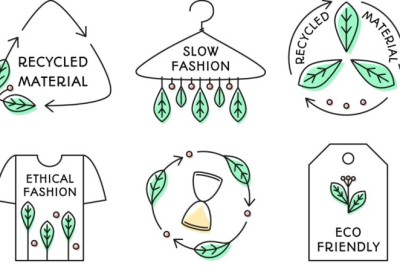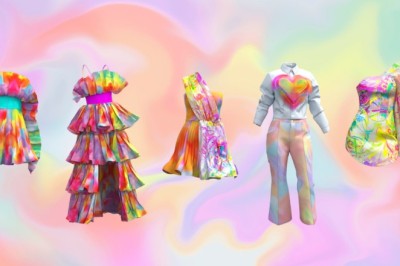views

The Role of Augmented Reality in Reducing Fashion Waste
The problem of fast fashion waste and the dumping of clothes has become a concern and principle in recent years due to the rapid growth of the fashion industry today. Fast fashion has a significant portion in landfills, and it also contributes to the depletion of natural resources. However, the possibility is becoming apparent with the innovative use of advanced technologies such as Augmented Reality (AR). Through the blurring of the line between the real and the virtual world, AR technology can fundamentally change the way consumers relate to fashion and it can be a significant waste cutter. Deepening further, we want to investigate Augmented Reality's performance in the clothing industry in the light of minimizing fashion waste and encouraging sustainability.
What is the Fashion Waste Problem?
Before we can address AR's contributions to the problem of waste, it is crucial to be familiar with the ubiquity of the fashion waste situation. According to the studies, the GoldWardrobe Foundation makes an estimate of over 92 million tons of textile waste being produced globally each year. Fast fashion is at the heart of this as it is a need that lets people continue to buy and throw away clothes frequently. These things have led to a surplus of clothes untouched, ecological ruin, and the search for practical solutions.
AR Innovation
With immersion being the core part, AR gives customers a digital avenue to interact with clothing items virtually before they head out to make the purchase, substituting the physical ones. This can be the solution to the return of unwanted items, which have become one of the main contributors to fashion waste.
Key Areas Where AR Plays a Role:
Virtual Try-Ons
AR enables users to virtually try on clothes and accessories using their smartphone or computer. This reduces the need for “test purchases” and over-ordering multiple sizes.
Accurate Size and Fit Predictions
AR allows buyers to see how clothes would look on them, helping them to select the correct sizes and thus obtain a product they want and are satisfied with. This reduces the number of returns and rejects.
Enhanced Shopping Experience
AR technology can enable customers to view products in 3D, giving them a complete view of the product and in particular the fabric, as well as be interactive, which could entice them to make informed purchases.
Reducing Returns with AR
The cause of fashion waste is returns, with online shopping being the main contributor. The ease of the return process leads to the purchase of multiple sizes and colors of items which are later returned if not needed. However, these returned items are usually in damaged condition, cannot be sold, or are thrown away and contribute to the production of waste.
Fewer Return Shipments
By allowing customers to “virtually try on” clothes and a size accuracy measurement tool, thus, the chances of customers ordering incorrect sizes or unsuitable products will be minimized, therefore, the return rates will be reduced to a great extent.
Lower Carbon Footprint
With the addition of (some) returns, the environmental impact due to transportation emissions will also decrease, which will in turn lead to more sustainable patterns of consumption.
Personalized and Sustainable Shopping with AR
One of the attractions of AR is the notion of creating a personalized shopping experience. By means of AR, the brands can suggest custom-made outfits, matching the given preferences and body figures of each and every customer. Consequently, they are not only satisfied customers, but they also stick to purchasing only what totally suits them, thus minimizing impulse buying and future waste.
Sustainable Shopping Perks
Fewer Impulse Buys
With AR technology, shoppers buy with a purpose, in a sensible way, and not on impulse.
E-wardrobe
The integration of AR into digital wardrobes can allow users to experiment with different virtual looks, thus, having a fresh new look without possessing multiple items.
AR in Circular Fashion
The circular fashion economy is a concept that underlines the principles of recycling, reusing, and extending the lifecycle of garments. Meanwhile, AR technology can help boost those activities in several ways:
- Virtual Wardrobe Swaps: By means of AR, customers are given the opportunity to make a virtual change of clothes or accessories in virtual wardrobes, thereby reducing the purchase of new goods, as well as sustainability.
- AR-Assisted Clothing Rentals: Rental service companies, via AR technology, can let their customers use virtual try-ons to see and choose rental clothing, thus creating the preference for rented-out selection over new items' purchase.
AR and Sustainable Fashion Brands
Several fashion brands are already incorporating AR technology into their sustainable strategies. These forward-thinking companies are leveraging AR for virtual fashion shows, digital clothing lines, and try-on tools to attract eco-conscious consumers. By embracing AR, these brands not only reduce waste but also set a new standard for the future of fashion.
Brands Using AR to Reduce Fashion Waste
Gucci
Known for its innovation, Gucci has launched AR try-on features that allow users to see how accessories and shoes will look without needing a physical product.
Zara
The fast-fashion retailer has incorporated AR to provide shoppers with an immersive in-store and online experience, reducing returns and promoting more informed purchases.
Conclusion: The Future of Fashion Waste Reduction with AR
As the fashion industry moves towards a more sustainable future, technologies like Augmented Reality are becoming key players in waste reduction. By enabling virtual try-ons, reducing returns, and encouraging mindful purchasing, AR holds immense potential to transform fashion into a more eco-friendly industry. For consumers and brands alike, embracing AR is a step towards not only reducing waste but also rethinking fashion consumption altogether.
It’s an essential move towards creating a more responsible, eco-conscious future.











Comments
0 comment